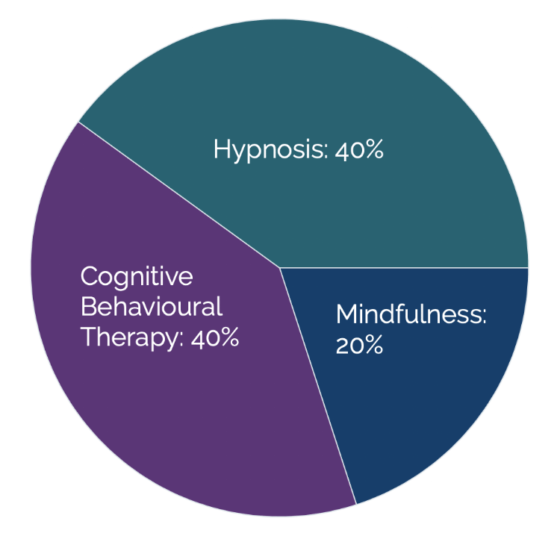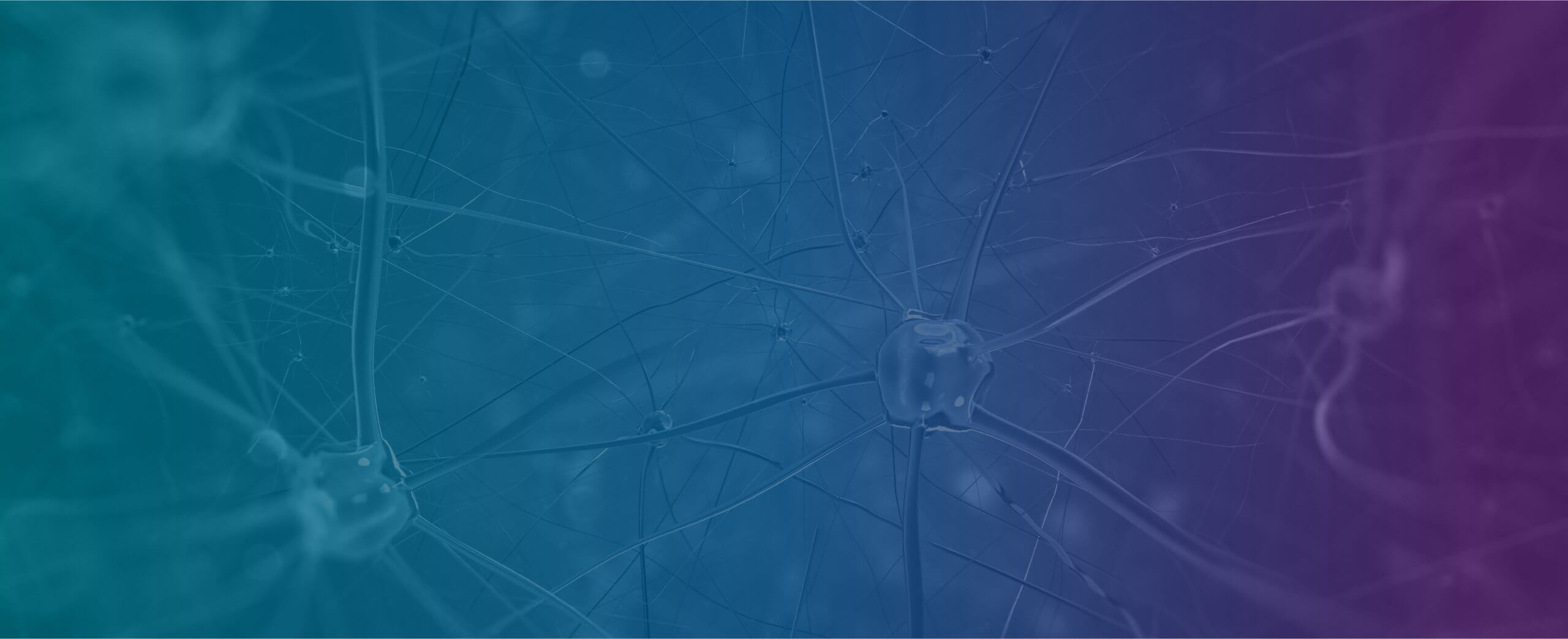- Last Updated
- Posted by
- CBT, Hypno-CBT (Cognitive Behavioural Hypnotherapy), Hypnosis, Hypnotherapy, Research, Training
One of the most commonly asked questions we get is: what exactly IS the Hypno-CBT® model?
So I thought I’d answer that question – and explain a bit about why it is so effective and how we teach it as an integrative approach.

So, what is Hypno-CBT®?
Whilst the Diploma training introduces students to other schools of hypnotherapy, we focus primarily on the cognitive-behavioural approach to hypnosis and on our own special model called Hypno-CBT®.
Now, just to confuse matters, there are actually several different models of cognitive behavioural hypnotherapy!
Some of them are “CBT plus put them in a trance and add some relaxation hypnosis” – a pretty basic approach.
Other approaches are quite sophisticated. My dear colleague and friend, the late Dr Assen Alladin, took an approach where he combined a “dissociation” model of hypnosis with CBT interventions.
(He considered hypnosis to be “dissociation” – a rather fuzzy and poorly defined concept that has more history with psychiatry than with psychology.)
Dr Alladin did groundbreaking research, running a randomised control trial comparing CBT for depression with CBT+hypnosis for depression – and I’ll talk about the results later on.
Compared with other approaches, the Hypno-CBT® model we’ve developed is a seamless integration of social, cognitive and behavioural psychology and psychotherapy with a modern approach to hypnosis.
This allows therapists to have enormous skill and flexibility in the way they use hypnosis and integrate it with other techniques. – and base their approach upon strongly supported theories in mainstream psychology.
So when I say Hypno-CBT® is an integrative cognitive behavioural approach – let me explain and unpack that in a helpful way.
Firstly when we say Hypno-CBT® is “cognitive-behavioural” this is about three specific ways in which it is “cognitive-behavioural” :
- The way we understand hypnosis is “cognitive-behavioural” – it is about attention focused on thoughts, expectation and motivation and not “being put into a trance”
- The way we understand client problems, what is called the “conceptualisation” or “working model” of the problem, is cognitive-behavioural, and under the control of things happening now, in the present moment.
For example, we understand someone’s phobia in terms of fearful beliefs activating strong emotions that lead to avoidance behaviour, and the avoidance behaviour meaning we never learn the scary thing isn’t really dangerous.
Whereas a Freudian conceptualisation might see a phobia or anxiety as repressed sexual desire driven by an unconscious fear of castration etc.
(In my experience clients find the first explanation more helpful than the Freudian one!) - Finally, we use a whole range of interventions that are “cognitive-behavioural” – so teach new ways of thinking, how to let go of thoughts, how to relax, how to calm down, how to problem solve, how to approach scary things, how to be assertive etc. AND we add hypnosis to all of that to make it twice as powerful.
We don't use hypnosis to “access the unconscious to free the hidden block” – that is NOT a cognitive behavioural technique.
And when we say that Hypno-CBT® method is “integrative” – we also mean in three ways:
- Hypnotherapy is integrated seamlessly with CBT (e.g. much more than doing some CBT and then a bit of hypnosis) – interventions are tightly integrated – and we've developed unique techniques to do this.
- We integrate hypnosis and mindfulness on a spectrum with hypnosis on one end and mindfulness on the other. Moreover the client’s problems are often conceptualised as a type of negative self-hypnosis (they believe and respond to negative automatic thoughts – as if they were true).
So the whole client issue is a hypnotic problem. And helping the client dehypnotise from their negative thoughts is one of the tasks in therapy. And then getting the client to focus and imagine more helpful thoughts being true is a second task.
This makes sense to clients and therapists – and easily introduces the client to the idea of hypnosis. - We aim for healthy integrated functioning of emotion, thought and action as one rather than divided – healing the “schism” between those systems. (i.e. our feelings, thoughts and behavior are one – we say and do what we feel and think in way that is functional and adaptive for an individual in a given situation).
When we are in a state of “flow” we are at one with ourselves and our task or situation. We aim to have clients return to feeling at one with themselves, comfortable in their own skin, and having more experiences where they unconsciously flow as a whole being with their environment (in conversations, dancing, nature, sports, sex etc)
Is it effective?
Modern research on hypnotherapy has been increasingly focused upon the integration of hypnotherapy and CBT since the publication of an influential study carried out in 1995 by Irvine Kirsch et al.
In 1996 Kirsch’s meta-analysis compared the efficacy of cognitive-behavioural hypnotherapy to CBT alone, drawing data from 18 randomised control trials – and showed that for between 70-90% of clients, cognitive and behavioural therapies were more effective when integrated with hypnosis. (Kirsch et al., 1996).
Twenty-five years have passed since the publication of Kirsch’s widely cited meta-analysis – so in 2021 Ramondo et al (University of Western Australia) published an updated search and meta-analysis on Clinical Hypnosis as an Adjunct to Cognitive Behaviour Therapy. They pooled the results from 48 controlled studies, including 1,928 participants. Each study was a randomised control trial of CBT vs CBT+Hypnosis. The results broadly supported the earlier Kirsch meta-analysis:
This investigation suggests that the adjunctive use of clinical hypnosis can help make CBT a more efficacious and enduring treatment, with 66% of participants at posttreatment, and 72% at follow-up, experiencing better outcomes than their CBT counterparts. (Ramondo et al, 2021)
So for the vast majority of clients, adding hypnosis to CBT i(cognitive-behavioural hypnotherapy) is superior to CBT alone!
Even before this, expert clinicians’ reports had reached similar conclusions:
“We believe on the basis of our clinical experience that when behaviour therapy and hypnosis are used together, a synergistic effect results. (Kroger & Fezler, 1976: 74).”
And of course there is so much evidence for the effectiveness of cognitive behavioural therapies, which is why they are the recommended treatments in the NHS in the UK and why they dominate the list of Empirically Validated Treatments in the USA.
If, by adding hypnosis, we can improve upon the effectiveness of CBT then this is exciting and important news.
In 2007 Dr Assen Alladin’s study on CBT vs CBT+hypnosis for depression also found that the CBT+hypnosis was superior to CBT alone –
“The hypnosis group produced 6%, 5%, and 8% greater reduction in depression, anxiety and hopelessness – this was maintained at 6- month an 12-month follow-ups.” (Alladin & Alibhai, 2007)
How does the addition or integration of hypnosis improve results compared to CBT alone?
Key ways in which hypnosis enhances cognitive and behavioural interventions include:
- Raising ‘response expectancy’
- Facilitating profound relaxation
- Improving the client’s degree of ‘imaginal absorption’
- Learning self-hypnosis increases self-efficacy and self-regulation
- Can enhance and deepen the “working alliance” (therapeutic relationship)
Among many, many others!
How do we teach CBT so quickly as part of the Diploma course?
Firstly we cover the key CBT concepts and process aims, as well as a wide range of techniques based on the main learning theories in psychology (classical conditioning, operant conditioning, social learning, information processing).
Secondly, we teach more from CBT principles than a manualised approach. You therefore learn the fundamentals of the CBT mindset and approach – and then how to be flexible and creative in designing treatment plans.
We think that a focus on CBT fundamentals and what is called “Process Based CBT” is the new direction that CBT is headed in.
And thirdly we particularly like to teach CBT approaches that are simple, easy to learn, well-evidenced and have very broad application – for example:
- Multi-modal (hypno-) Therapy
- Systematic (hypno-) Desensitisation and Imaginal Exposure methods
- Stress Inoculation (hypno-) Training
- Problem Solving (hypno-) Therapy
We don’t just “add” hypnosis – we have carefully integrated hypnosis into every aspect of those approaches.
Indeed we have different “take” on CBT than most traditional CBT training approaches – some key differences:
– The nature and function of language and thought (Vygotsky/Meichenbaum)
– The function of tension in the skeletal musculature
– The relationship between facial tensions and thoughts/images
– The role of inhibition and therapeutic aims of “disinhibiting” the nervous system
– An integrated view of tension, language, thought, emotion, behaviour and the moment by moment of phenomena of our experience.
– And of course the hypnotic impact of language and images.
Learning the language of modern psychology
Whilst the Diploma is not a CBT qualification itself, the approach taken and techniques used (and the reasons for using the techniques) are recognised by healthcare professionals trained in CBT.
And for sub-clinical and mild mental health issues, the approach is very much endorsed by fully accredited CBT psychotherapists.
I can assure you that if you start talking about “inducing a trance” or “putting the client into a dissociative state” – or “regressing the client to a traumatic experience from childhood” – many mental health professionals will be quite concerned. Doctors are unlikely to refer patients..
Even if you are doing great therapy they just don’t like the sound of those ideas!
When you learn the fundamentals of the CBT approach in the way we teach, it allows you to speak the same language as medical and mental health professionals.
For example a dentist asked me, while I was in his chair, how I'd treat “dentist phobia”. I explained systematic desensitisation – training the client very well in a relaxation method, then building a hierarchy of their fears – and then having them face the lowest item on the list as the stay relaxed and relax more deeply…. until they can stay completely relaxed with that item. Them proceed to the next item up the list, until we worked through every item.
“Oh I can see that sort of conditioning approach would work. Have you got some leaflets?” “Sure”.
Then he pulled my tooth out.
We’ve been teaching cognitive behavioural approaches to hypnotherapy since our first courses and workshops in 2003, long before other training schools. We are well-known as pioneers and specialists in this area and in evidence-based approaches to hypnotherapy in general.
We're excited to now have moved away from classroom training into both live webcast and an online hypnotherapy course so that those who want to learn this modern, unique approach can study it from anywhere in the world, at home, at their own pace.
I’ve also made a short video on our website to explain the CBH model further – you can click here to watch it.
Further Reading
Combining Hypnosis and CBT – Part
Hypno-CBT® and Cognitive-Behavioural Hypnotherapy
The Hypno-CBT® Toolbox – 35 evidence-based techniques
Towards an Evidence-Based Hypnosis
Hypno-CBT® – The Cognitive Behavioural Approach to Hypnotherapy
Origins of “Cognitive Hypnotherapy”
References:
Assen Alladin & Alisha Alibhai (2007) ‘Cognitive Hypnotherapy for Depression: An Empirical Investigation’, International Journal of Clinical and Experimental Hypnosis, 55 (2), 147-166.
Kirsch, I.; Montgomery, Guy; Sapirstein, Guy (1995). ‘Hypnosis as an adjunct to cognitive behavioral psychotherapy’: A meta-analysis.’ Journal of Consulting and Clinical Psychology, 63 (2), 214-220.
Kroger, William S. & Fezler, William D., ‘Hypnosis & Behaviour Modification: Imagery Conditioning’ (1976).

